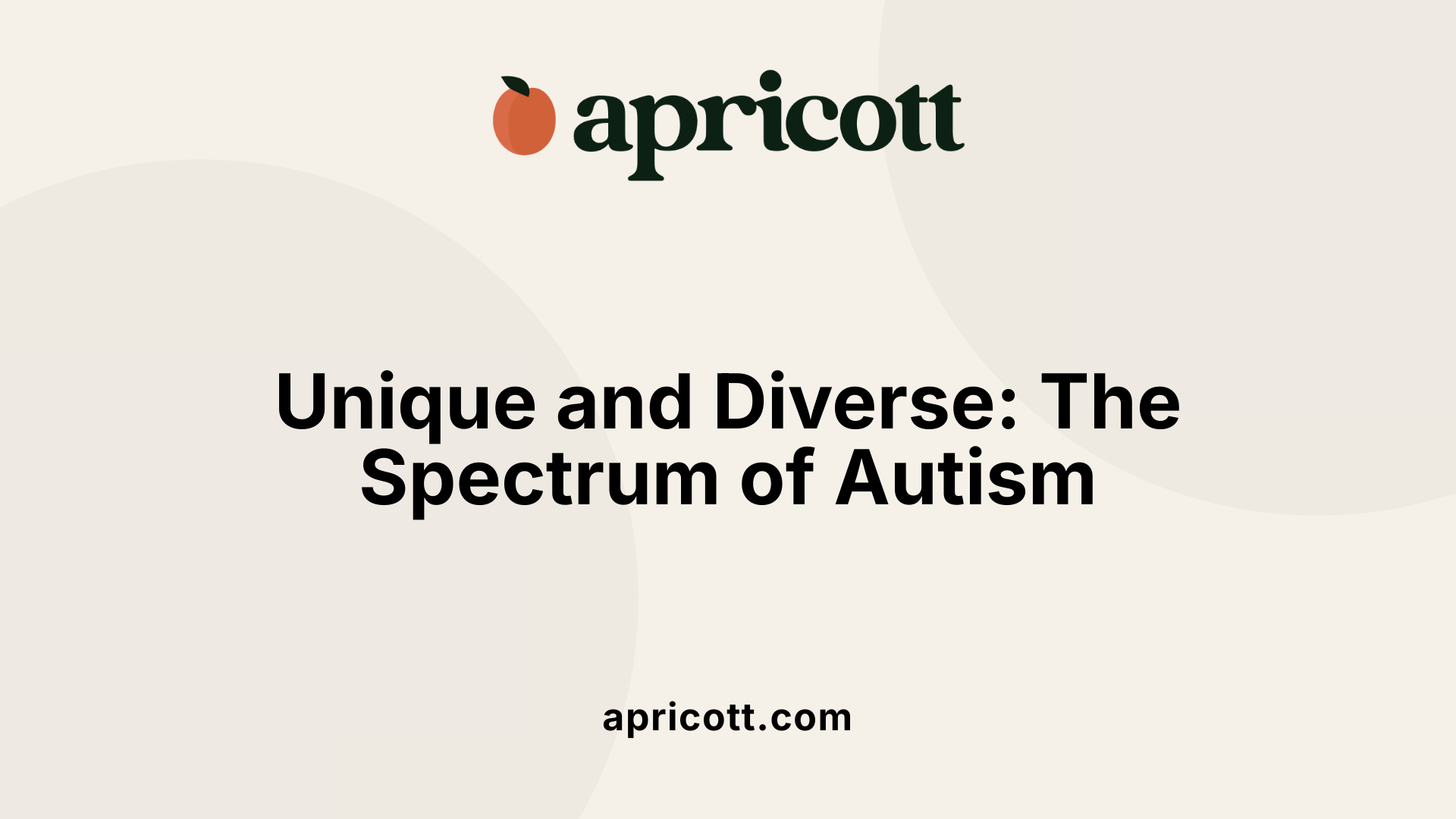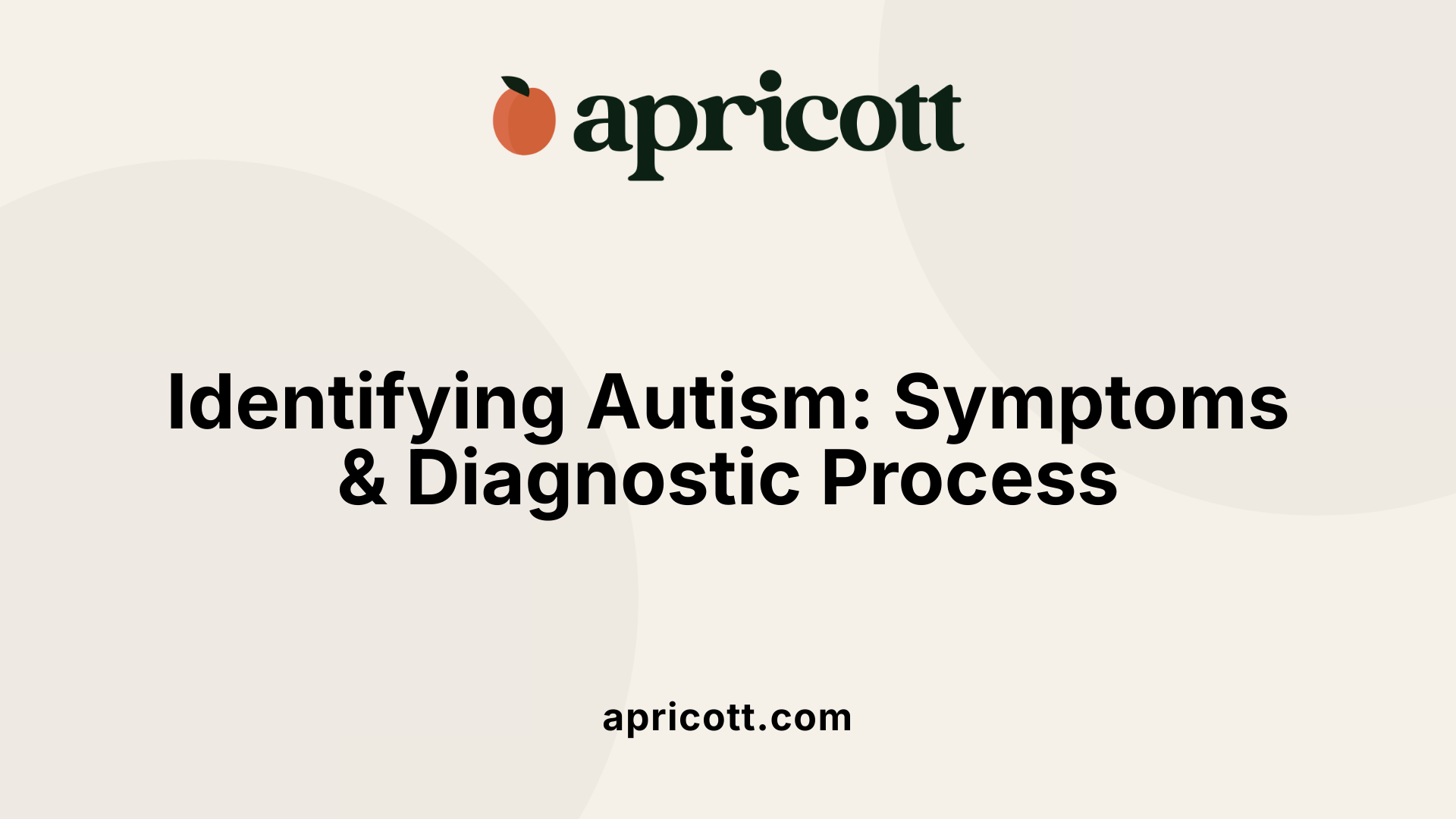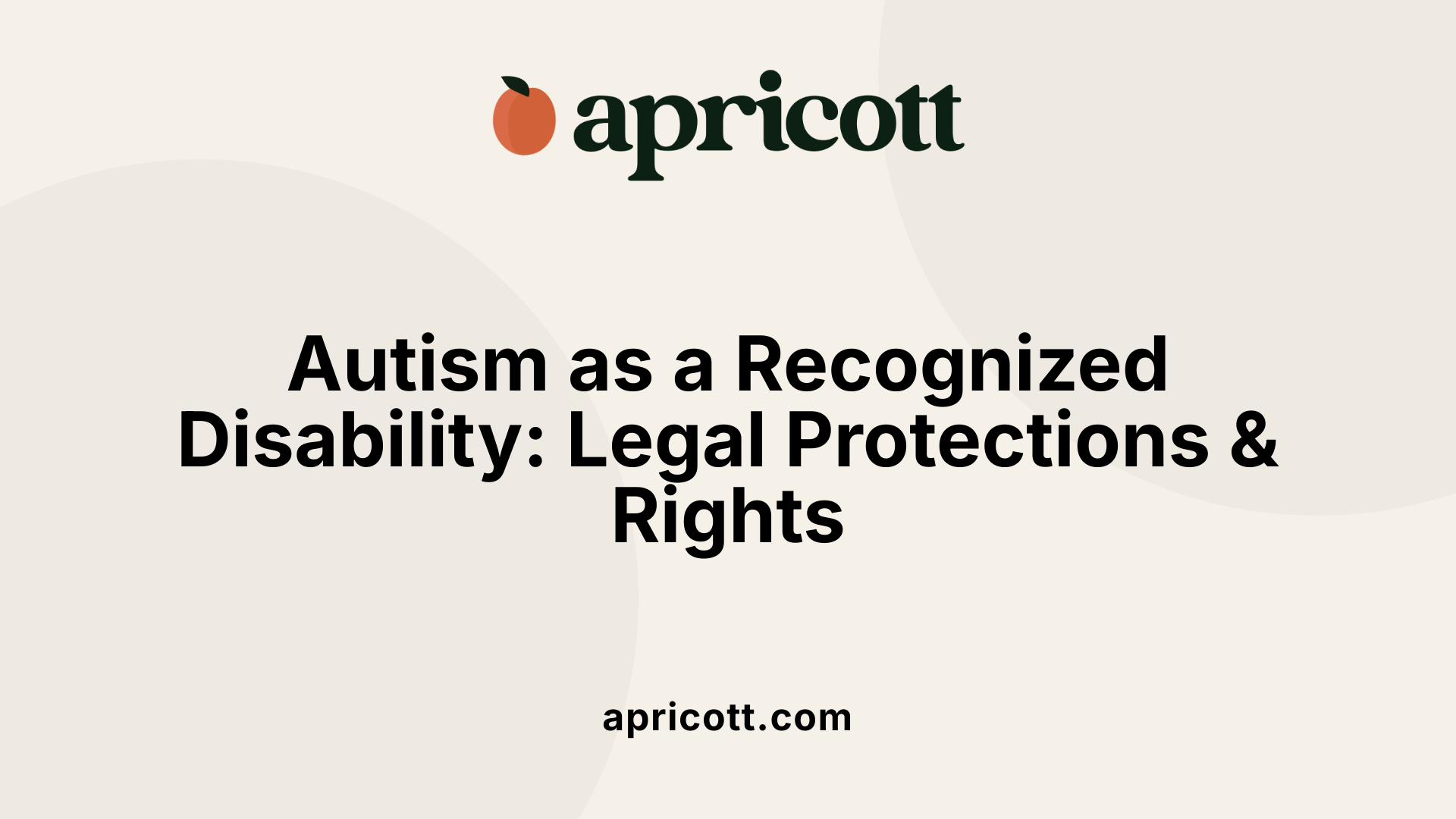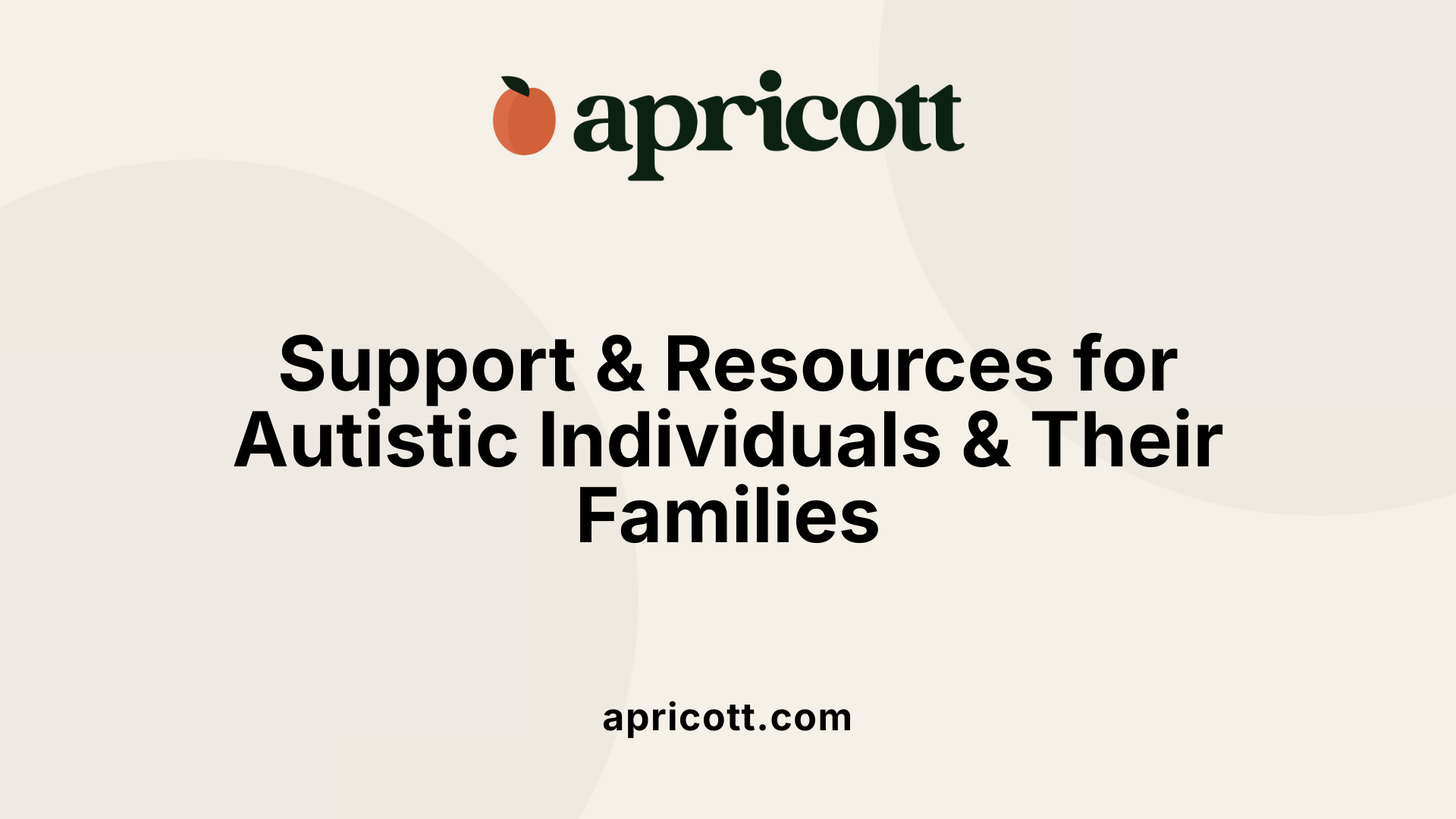July 16, 2025
Understanding Autism and Its Classification as a Disability
Autism spectrum disorder (ASD) is a complex neurodevelopmental condition that impacts how individuals communicate, socialize, and behave. With a prevalence estimated at 1 to 2 percent of the population, autism is a lifelong condition that manifests early in life, often before age three, though diagnoses may sometimes be delayed into adolescence or adulthood. Recognizing autism's diversity is essential, as it encompasses a broad spectrum of experiences, abilities, and support needs.

Autism Spectrum Disorder (ASD) is a developmental condition that affects how a person communicates, interacts socially, and behaves. It is called a spectrum because it covers a wide range of symptoms and levels of impairment.
Individuals with ASD often show challenges in social communication, such as difficulty understanding others' emotions or sharing interests. They may have repetitive behaviors, intense interests, or routines they prefer to follow. Some common signs include:
Many autistic people may also react differently to various stimuli, find socializing tiring, or become overwhelmed in busy environments. They might need routines for comfort and may express joy or calm through movements or actions.
Every autistic person is unique. Some may have advanced language skills while others are nonverbal. Cognitive abilities vary widely, with some individuals having above-average intelligence and others having learning disabilities. Many also experience co-occurring conditions such as ADHD, anxiety, or epilepsy. The diversity among autistic individuals highlights the importance of personalized support and understanding.
Yes, ASD is classified as a disability. It significantly affects daily functioning and communication, often necessitating support. Legally, autism is recognized under frameworks like the ADA in the US and UK protections, which provide rights against discrimination and access to services. Medical classification labels autism as a developmental and mental disorder because of its neurological basis, but many autistic people prefer to see themselves as neurodiverse rather than disabled. Nonetheless, the recognition as a disability ensures appropriate accommodations and benefits for those who need them.

Autism is diagnosed through a detailed assessment process that involves behavioral observations, developmental history, and reports from caregivers and teachers. Importantly, there are no specific medical tests, like blood tests, to diagnose autism directly. Healthcare professionals use criteria from the DSM-5-TR to identify persistent deficits in social communication and restrictive and repetitive behaviors.
Common symptoms of autism include difficulties with social interactions, such as limited eye contact, challenges understanding or using social cues, and delayed speech or language skills. Many individuals may engage in repetitive behaviors like lining up toys, hand-flapping, or rocking. Sensory sensitivities are also prevalent, with some autistic people finding certain sounds, lights, or textures overwhelming.
Others may have intense interests in specific topics and prefer routine and predictability. Changes in environment or routine can be particularly challenging, sometimes leading to distress or meltdowns. Early diagnosis and intervention are essential to support individuals' development and help them manage symptoms effectively.
Autism severity varies widely among individuals and greatly influences the amount of support needed. The DSM-5 classifies autism into three levels:
| Severity Level | Description | Support Needs | Typical Characteristics |
|---|---|---|---|
| Level 1 | Requiring support | Moderate | Noticeable social impairments, some difficulty initiating interactions, may need help with organization or planning |
| Level 2 | Requiring substantial support | Significant | Marked difficulties with social communication, limited social interactions, noticeable repetitive behaviors |
| Level 3 | Requiring very substantial support | Severe | Severe deficits in communication, minimal responses to social cues, highly inflexible behaviors, significant impact on everyday functioning |
These levels help guide interventions and services but do not solely determine eligibility for specific supports. Understanding the severity can help caregivers and professionals develop tailored strategies to meet individual needs, aiming for independence and improved quality of life.
 In many countries, autism is recognized as a disability under both medical and legal frameworks. This recognition grants individuals with autism certain protections and access to services, accommodations, and benefits.
In many countries, autism is recognized as a disability under both medical and legal frameworks. This recognition grants individuals with autism certain protections and access to services, accommodations, and benefits.
Legal Status in Different Countries Autism’s recognition varies globally. In the United States, autism is classified as a developmental disorder and a disability under laws such as the Americans with Disabilities Act (ADA) and the Social Security Act. Similarly, in the United Kingdom, autism is considered a disability under the Equality Act 2010, providing protections against discrimination and securing the right to reasonable adjustments.
Other countries, including Canada and Australia, also recognize autism as a disability, which allows individuals to access specialized services and legal protections.
Legislation like ADA and SSA Blue Book In the U.S., federal laws like the ADA and the SSA Blue Book explicitly classify autism as a qualifying condition for disability benefits. The Blue Book (Social Security Administration’s Listing of Impairments) lists autism under sections 12.10 for adults and 112.10 for children, outlining specific criteria for diagnosis and functional limitations.
The ADA explicitly prohibits discrimination against individuals with autism in employment, education, and public accommodations, requiring reasonable adjustments to support their full participation.
Protection Against Discrimination Legal statutes safeguard autistic individuals from discrimination in various settings. These laws stipulate that individuals with autism should not face unfair treatment at work, school, or in community services solely due to their neurological differences.
Proof of disability, such as medical documentation and reports, is typically necessary to access protections and benefits. This evidence demonstrates the functional impairments caused by autism, including challenges with communication, social interactions, and repetitive behaviors.
| Aspect | Details | Additional Information |
|---|---|---|
| Medical Classification | Recognized as developmental disability | Based on neurological differences, not an illness or mental health issue |
| Legal Protections | ADA (U.S.), Equality Act (U.K.), equivalent laws elsewhere | Provides rights to accommodations and protection from discrimination |
| Benefit Eligibility Criteria | Listed in SSA Blue Book, Sections 12.10 (adults), 112.10 (children) | Requires medical and functional evidence of significant impairments |
| Support Services | Special education, workplace accommodations, healthcare access | Often covered under public programs like Medicaid, SSDI, and SSI |
Overall, recognizing autism as a disability in legal frameworks ensures that affected individuals receive essential protections, support, and opportunities. The recognition underscores the importance of fostering inclusive environments where people on the autism spectrum can thrive.

Individuals with autism who are classified as disabled have access to a variety of support services aimed at improving their daily lives, promoting independence, and fostering community inclusion.
Educational accommodations are a vital part of support, especially for children and students. Under laws like the Individuals with Disabilities Education Act (IDEA), schools are required to provide specialized educational plans such as Individualized Education Programs (IEPs). These plans include accommodations like modified curricula, speech and language therapy, occupational therapy, and behavioral interventions. Early diagnosis allows for timely interventions that can significantly enhance development.
Therapies and interventions form another cornerstone of support. Evidence-based practices such as Applied Behavioral Analysis (ABA), speech and language therapy, occupational therapy, and social skills training are widely used. Medications may also be prescribed to manage co-occurring conditions like anxiety or epilepsy, which are common among autistic individuals.
Community and government programs further extend assistance. State agencies often run programs aimed at supporting autistic individuals and their families, such as the Texas Health and Human Services Children’s Autism Program, which provides ABA services for children between ages 3 and 15. These programs typically have eligibility criteria based on age, diagnosis, and residence, and they limit the amount of therapy provided within a year.
On a national level, organizations like the Autism Society and Easterseals offer critical resources, including training, caregiver support, and advocacy. They provide resource guides, training programs, and community connections which help navigate the complexities of autism support services.
Government resources extend beyond educational support. The CDC offers extensive research, risk assessments, and early screening tools that help identify autism in young children. The Social Security Administration (SSA) provides disability benefits like Supplemental Security Income (SSI) and Social Security Disability Insurance (SSDI), which can offer financial assistance to those unable to work due to autism-related challenges.
By utilizing these resources, families and individuals can access programs tailored to their needs, promoting better health, education, and social integration.
Recognizing autism as a disability carries important consequences for individuals across various facets of life.
Access to benefits and services is among the most concrete implications. When autism is classified as a disability, affected individuals become eligible for government assistance programs such as Social Security Disability Insurance (SSDI) and Supplemental Security Income (SSI). These benefits can provide critical financial support, especially for those who face challenges in maintaining employment or require ongoing care.
Legal protections form another crucial aspect. Under laws like the Americans with Disabilities Act (ADA) in the U.S. and similar frameworks in other countries, autistic people are safeguarded against discrimination in employment, education, and access to public facilities. This legal recognition mandates reasonable accommodations in workplaces and schools, fostering more inclusive environments.
Societal perceptions also evolve when autism is acknowledged as a disability. It helps increase awareness and understanding, reducing stigma and promoting acceptance. This shift supports the development of policies that encourage community integration, adaptive technologies, and tailored support services. Overall, the formal recognition of autism as a disability emphasizes the importance of equitable treatment, support, and opportunities for participation in society, ultimately fostering a more inclusive world for autistic individuals.
Acknowledging autism as a disability has a profound impact on shaping future initiatives. It emphasizes the need to deepen scientific understanding of the condition by encouraging more targeted research into its causes, varied presentations, and effective interventions.
This recognition also drives policy reforms aimed at expanding access to vital services like healthcare, educational support, and employment accommodations. Legal protections under frameworks such as the ADA and SSA help promote inclusive environments, fostering equal opportunities for autistic individuals.
Advocacy efforts are increasingly focused on raising awareness, combating stigma, and defending rights. These initiatives promote societal acceptance and push for more resources to support community integration and independence.
Overall, viewing autism as a disability motivates sustained efforts across research, policy, and advocacy to create a more inclusive world that recognizes and values neurodiversity. The ongoing development of innovative supports and supportive legislation aims to meet the diverse needs of individuals on the autism spectrum and improve their quality of life.
In summary, autism spectrum disorder is a formally recognized disability that affects many aspects of life for individuals on the spectrum. While autism presents unique challenges, it also highlights the importance of early diagnosis, tailored interventions, legal protections, and support networks. Recognizing autism as a disability ensures that affected individuals can access necessary resources, advocate for their rights, and lead meaningful, inclusive lives. Ongoing research, policy improvements, and societal awareness are key to fostering a more accepting environment and supporting the diverse needs of autistic people.